“You can’t fire a cannon from a canoe.” This expression, favored by strength and conditioning coaches everywhere, refers to the fact that the production of great force requires a solid platform — a concept that holds as true for the human body as it does for artillery. Picture yourself hurling a baseball. To throw it far or fast without undue strain requires a strong, stable shoulder joint.
Unfortunately, inadequate shoulder stability — or shoulder hypermobility — is common, due to muscle imbalances that develop through prolonged sitting or repetitive movements. This increases the likelihood of injury to the shoulder joint. The good news: You can shore up your shoulders with a few key strengthening exercises.
Know Thy Shoulder
To understand how your shoulders can lose stability, it helps to first understand their basic structure and proper functioning. There are five parts of the shoulder joint:
- The scapula (or shoulder blade): The scapulae are flat bones in the upper back that connect the arms to the trunk and serve as “the foundation for the shoulder joint,” says Bill Hartman, PT, CSCS, owner of Indianapolis Fitness and Sports Training. “The scapula transfers force from the shoulder joint to the trunk.”
- The glenohumeral joint: This “ball and socket” joint is where the head of the humerus (upper arm bone) meets the shoulder blade. It allows for tremendous range of motion but tends to be unstable because the contact area between the humerus and the shoulder socket is very small. “Some people describe it as balancing a ball on the nose of a seal,” says Eric Cressey, CSCS, coauthor of Maximum Strength.
- The rotator cuff: The muscles and tendons that make up the rotator cuff compensate for the glenohumeral joint’s lack of stability by pressing the humeral head into the joint during heavy lifting and high-speed activities. It’s like a set of magnets that suck the humerus into the shoulder socket for added stability.
- The shoulder capsule: This ligament tissue encapsulates the head of the humerus and attaches to the shoulder socket through a layer of cartilage called the labrum. The shoulder capsule is the primary source of structural stability in the glenohumeral joint.
- The scapular muscles: The muscles that connect the shoulder blades to the rib cage, spine, collarbones and upper arms enable the shoulder blades to move in various directions. They also stabilize the shoulder during movements such as throwing.
Ideally, each part of your shoulder would do its job exactly as described, but the relationship between mobility and stability can go bad when one or more elements of the shoulder structure loses its ability to function optimally.
What Causes Shoulder Hypermobility?
“A hypermobile shoulder usually develops as a result of two things: faulty posturing or repetitive activities that cause the shoulder joint to adapt by increasing movement in one or more directions,” says Hartman.
Faulty Posturing. “Over time, hunched-over posture can cause the shoulders to become internally rotated,” explains Lee Mancini, MD, CSCS, CSN, of the University of Massachusetts Sports Medicine Group. “This internal rotation puts more stress on the labral cartilage during throwing and other arm movements.” Slouching also causes the shoulder blades to wing outward, away from the spine, which can cause the shoulders to become impinged when performing overhead arm actions.
Repetitive Motions. Shoulder hypermobility is common in swimmers, baseball and tennis players, and other athletes who routinely perform high-speed overhead movements through a wide range of motion. “These athletes need extra range of motion in the shoulders for their sport, but it’s often achieved at the cost of weak rotator-cuff muscles,” says Cressey. As a result, the humeral head slides back and forth during overhead arm motions, damaging the rotator cuff and labrum (a cartilage-like structure that lines the shoulder socket).
Even a conventional strength-training program can create strength imbalances between the shoulder’s internal rotators (pecs, deltoids), which typically get all the attention, and the external rotators (rotator cuffs), which are all but ignored. This imbalance also causes the shoulder blades to wing outward from the spine, inhibiting overhead range of motion and causing shoulder impingement injuries.
Are You Hypermobile?
There is no simple test for shoulder hypermobility. The only definitive clues, says Mancini, are the problems it causes, such as pain during the performance of overhead arm movements.
But there’s no sense in waiting for pain to tell you there’s a problem. Even if you’ve never had shoulder problems, it’s a good idea to incorporate shoulder-stabilizing exercises into your routine now. This reduces your likelihood of developing shoulder pain in the future, and may even improve your performance in other exercises (Cressey notes that weightlifters often increase their bench press by first improving their shoulder stability). If you suspect you have shoulder problems, and you don’t see improvement after four weeks of doing the following exercises, consider seeking an evaluation from a health professional.
3 Shoulder Hypermobility Exercises
“In general, training the dynamic stabilizers will effectively stabilize the shoulder joint,” says Bill Hartman, PT, CSCS, owner of Indianapolis Fitness and Sports Training. The following three exercises will do just that. Hartman recommends doing them twice a week as part of your normal strength workouts. Start with one set of each and advance to as many as three sets.
Seated Cable Row
This exercise strengthens the scapular stabilizing muscles, including the rhomboids, which connect the shoulder blades to the spine and function to retract the shoulder blades.
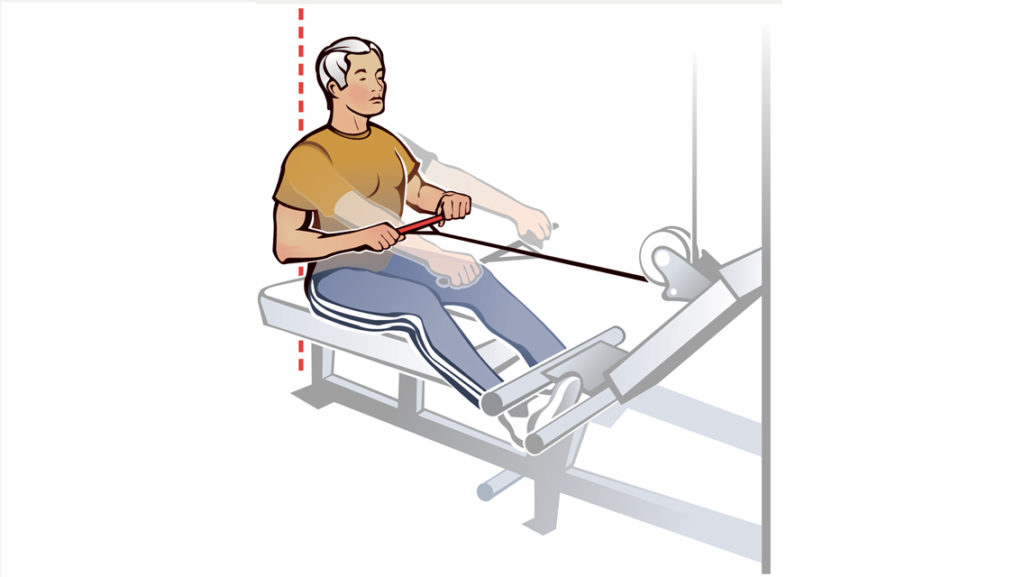
- Sit at a cable row station with a slight bend in the knees and grab the handle with both hands. Keep the chest out, shoulders back and eyes straight ahead so that you’re sitting up tall.
- As you pull the handle to your rib cage, concentrate on drawing your shoulder blades back and down. Avoid rocking at the waist to generate momentum and extend your arms slowly to return to the starting position.
- Complete eight to 10 repetitions.
Side-Lying Dumbbell Shoulder External Rotation
External rotation exercises strengthen the back of the rotator cuff, an oft-neglected area.
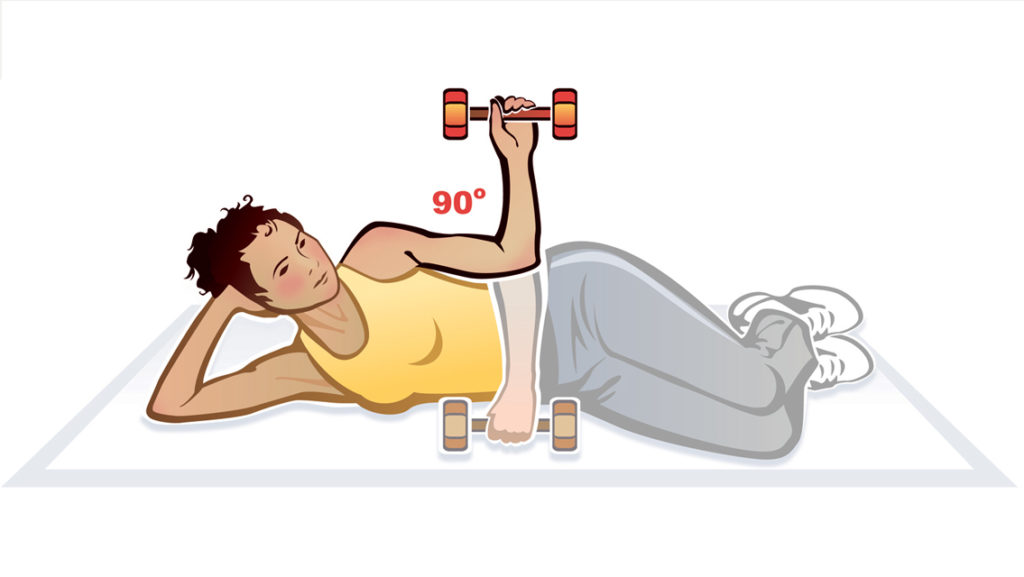
- Lie on your right side with a dumbbell in your left hand. Begin with your left arm bent 90 degrees, your upper arm resting against your side and your forearm angled toward the floor.
- Rotate your left shoulder so that the forearm swivels upward. Raise the dumbbell as high as you can, never letting your upper arm lose contact with your side. Return to the starting position.
- Complete 10 to 12 repetitions and then switch side.
Scapular Wall Slide
This will train your lower trapezius muscles to fire properly and help keep your shoulders healthy when they rotate upward.
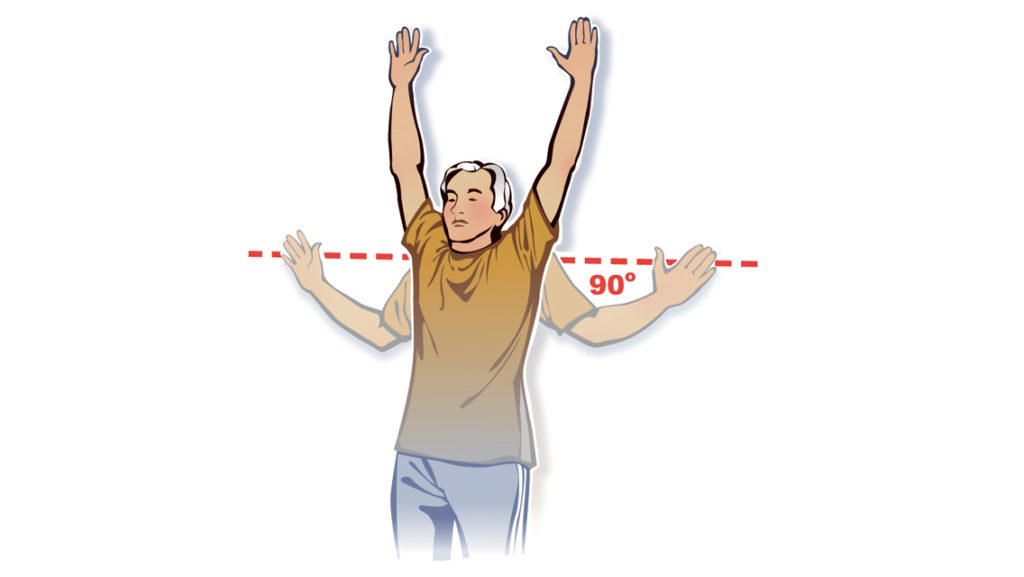
- Press your butt, back and head against a wall. Bend your elbows to 90 degrees and press both arms into the wall with the palms of your hands facing forward.
- Begin with your elbows tucked close to your sides and your hands at approximately shoulder level. Now slide your arms slowly upward against the wall until you look like a football referee signaling a touchdown.
- Keep your butt, back, shoulder blades, head, elbows and the backs of your hands pressed against the wall the whole way. Now slowly return to the start position.
- Repeat this sliding movement 12 times.
This article originally appeared as “Shifty Shoulders” in the December 2022 issue of Experience Life.
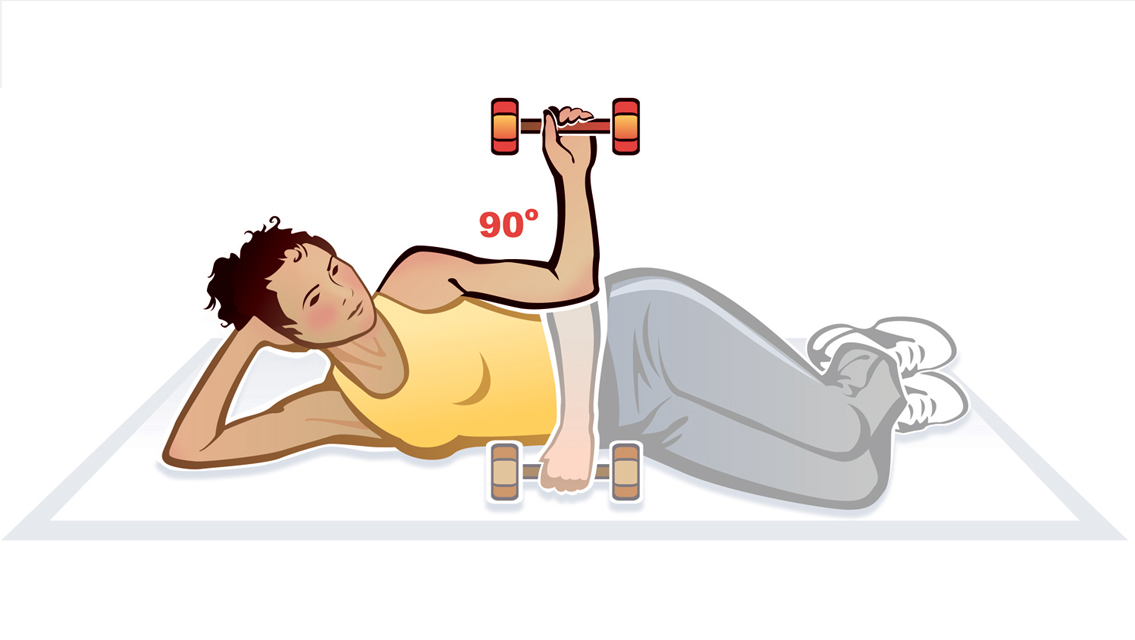
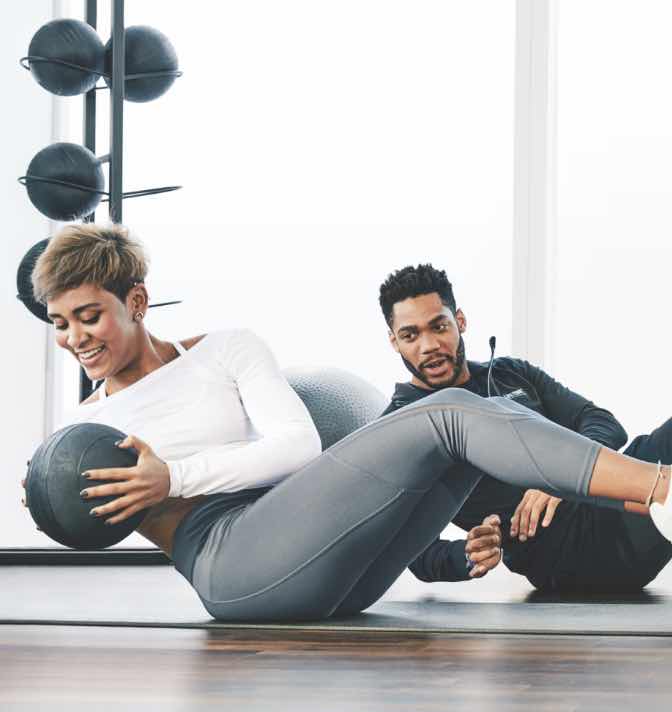
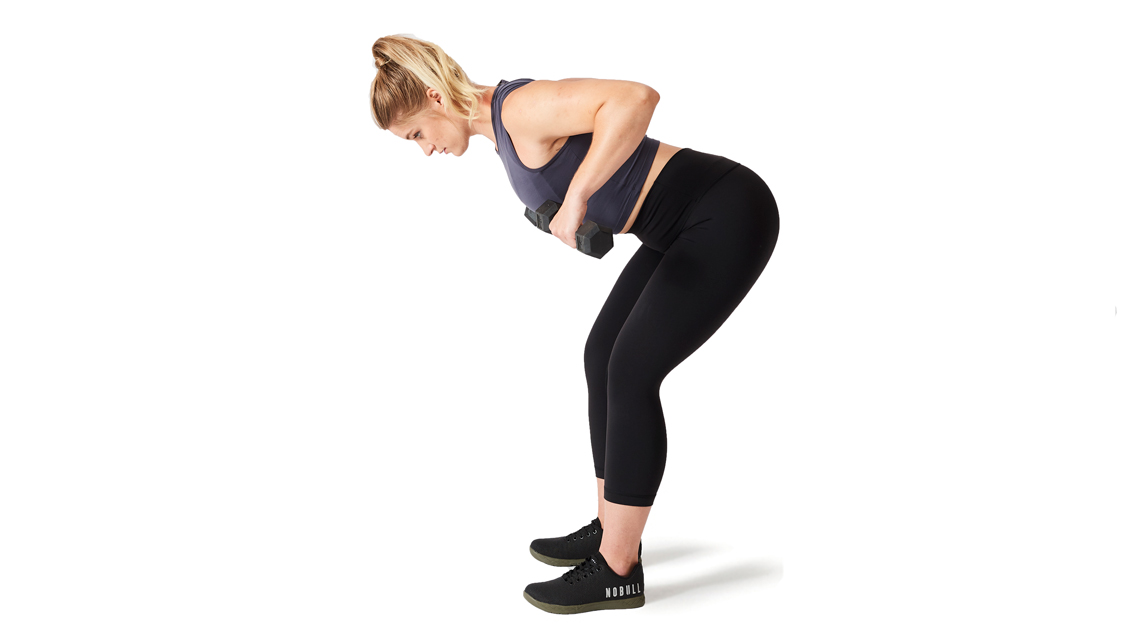


This Post Has 0 Comments